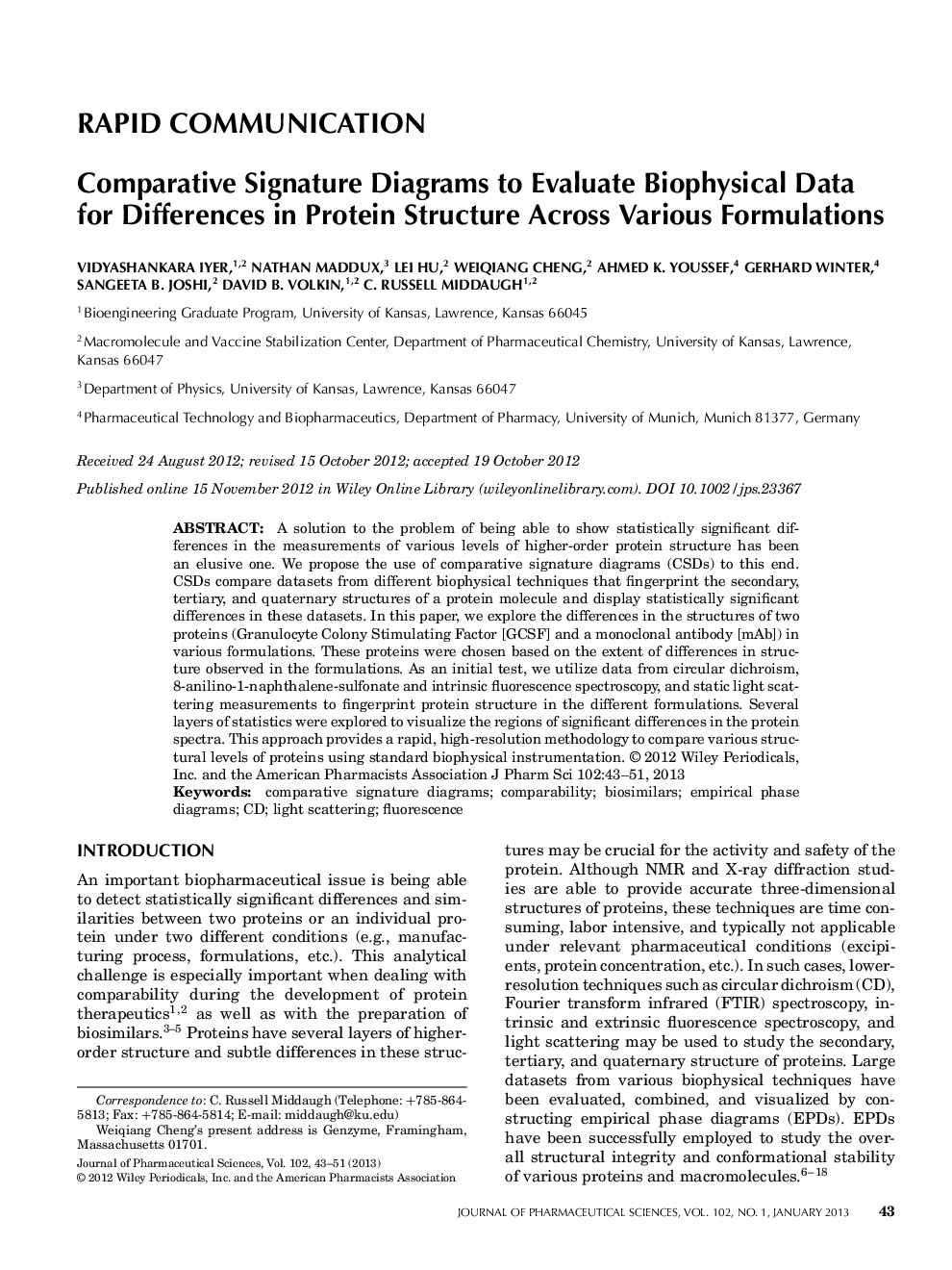| Article ID | Journal | Published Year | Pages | File Type |
|---|---|---|---|---|
| 2485436 | Journal of Pharmaceutical Sciences | 2013 | 9 Pages |
Abstract
A solution to the problem of being able to show statistically significant differences in the measurements of various levels of higherâorder protein structure has been an elusive one. We propose the use of comparative signature diagrams (CSDs) to this end. CSDs compare datasets from different biophysical techniques that fingerprint the secondary, tertiary, and quaternary structures of a protein molecule and display statistically significant differences in these datasets. In this paper, we explore the differences in the structures of two proteins (Granulocyte Colony Stimulating Factor [GCSF] and a monoclonal antibody [mAb]) in various formulations. These proteins were chosen based on the extent of differences in structure observed in the formulations. As an initial test, we utilize data from circular dichroism, 8âanilinoâ1ânaphthaleneâsulfonate and intrinsic fluorescence spectroscopy, and static light scattering measurements to fingerprint protein structure in the different formulations. Several layers of statistics were explored to visualize the regions of significant differences in the protein spectra. This approach provides a rapid, highâresolution methodology to compare various structural levels of proteins using standard biophysical instrumentation.
Related Topics
Health Sciences
Pharmacology, Toxicology and Pharmaceutical Science
Drug Discovery
Authors
Vidyashankara Iyer, Nathan Maddux, Lei Hu, Weiqiang Cheng, Ahmed K. Youssef, Gerhard Winter, Sangeeta B. Joshi, David B. Volkin, C. Russell Middaugh,
